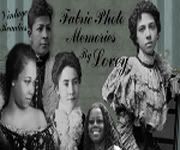
~ Bodys Isek Kingelez built stunning, colorful models to
help people see the magnificent places in his mind. ~

Ville de Sète 3009. 2000. Pierre Schwartz ADAGP;
courtesy Musée International des Arts Modestes (MIAM), Sète, France
A new exhibit at MoMA, Bodys Isek Kingelez: City Dreams, shows the late artist’s stunning and almost impossibly intricate sculptures made largely of paper products, paint, and glue. A mix of existing architectural styles and fantastical imaginings, the buildings are examples of what Kingelez wished the world could contain.

Kinshasa la Belle. 1991. (Maurice Aeschimann.
Courtesy CAAC – The Pigozzi Collection)
Courtesy CAAC – The Pigozzi Collection)
In Place de la Ville 1993, the city square is lined with the colors of the Zairian flag, and bears a red placard with the letters “MPR,” which stand for Mouvement Populaire de la Revolution,
the nation’s ruling political party before it ultimately collapsed in
the 1990s. Much of the artist’s work was influenced by Zaire’s
independence from the Congo in 1971. Kingelez wanted to participate in
the new country’s nation-building, but wasn’t sure what his role could
be.

Place de la Ville. 1993. (Courtesy The Museum of Everything)
One
day, while homebound with a fever, he built his first sculpture using a
razor, paper, and glue. A neighbor encouraged him to show it to the
staff at the National Museum of Kinshasa, who were so stunned by the
work they had Kingelez make another sculpture in front of them to prove
that he was in fact the creator. Kingelez became an art restorer for the
museum before devoting himself full-time to his art.His structures look like elements in a carnival: vivid, colorful, fine-boned but sturdy. In a 30-minute documentary that accompanies the exhibit, Kingelez says that “a building without color is like a person without clothes.” And his colors speak to his bold, direct vision. The palette is too loud to be Wes Anderson, the designs too intricate and upright to be Dr. Seuss.

Stars Palme Bouygues. 1989. (Vincent Everarts Photography Brussels)
The titles of Kingelez’s pieces include dates, but they don’t necessarily demarcate when the piece was built. Ville de Sete 3009,
for example, contains structures that are real as well as some that are
purely products of his imagination. “Even though he was incredibly
optimistic about the idea of what Zaire could be for its citizens, at
the same time he was faced with reality [and] offering optimistic
alternatives,” Sara Suzuki, the exhibit’s curator, said in a MoMA Live interview. “He knew that during his lifetime it was unlikely. He set dates in the future, but suggested that there is a path.”It’s a reflection of Kingelez’s optimism: Even if the structures he yearned for didn’t exist in the present, they could, perhaps, in the future. He created buildings like the Scientific Center of Hospitalisation the SIDA 1991 in the midst of an AIDS epidemic in Kinshasa (AIDS is ‘SIDA’ in French). The structure was an advanced medical center: part hospital, part research lab, and made entirely in Kingelez’s warm, vibrant style.
Kingelez’s interest in nation-building is a thread that can be seen through much of his work; the sculptures focus on buildings, cities, and architectural styles—not so much as they are, but as they could be. His work Kimbembele Ihunga 1994, is not a single structure but a city named after the village where he was born. Of the work, Kingelez, who died in 2015, once wrote that it “represents the shape of my imagination; it is the very image of my ability to create a new world.” With its skyscrapers, vivid colors, and well-planned streets, the city little resembles the agricultural village that is its namesake. But he wanted to imagine what it could be through labors of love and urban planning.

Kimbembele Ihunga. 1994. (Maurice Aeschimann. Courtesy CAAC – The Pigozzi Collection)
“He says Kinshasa is a tough city and it’s awful on the work, because
the climate is not good for work on paper, but it’s home,” said Suzuki.
“That’s where is family was, and it’s the city that really inspired
him. Going back to being part of nation-building, trying to engage in
that, that was something critical to him for his whole life.”MoMA’s Bodys Isek Kingelez: City Dreams is on exhibit through January 1, 2019.
Be sure to check out the offerings of other participants on Beverly's Pink Saturday blog hop.
And then go make something beautiful!
´¨)
¸.•´¸.•*´¨) ¸.•*´¨)
(¸.•´ (¸.•´? Tristan
¸.•´¸.•*´¨) ¸.•*´¨)
(¸.•´ (¸.•´? Tristan

Artist Bodys Isek Kingelez and
more of his work






















































































3 comments:
I lack both the patience and dexterity to do this type of work, but it sure is cool!
WOW!! Yes, talk about patience....
These are amazing structures!
Thanks for sharing Tristan!
Jackie xx
These ARE magical. And boy, the patience involved had to be intense. You find the most remarkable things!
Post a Comment